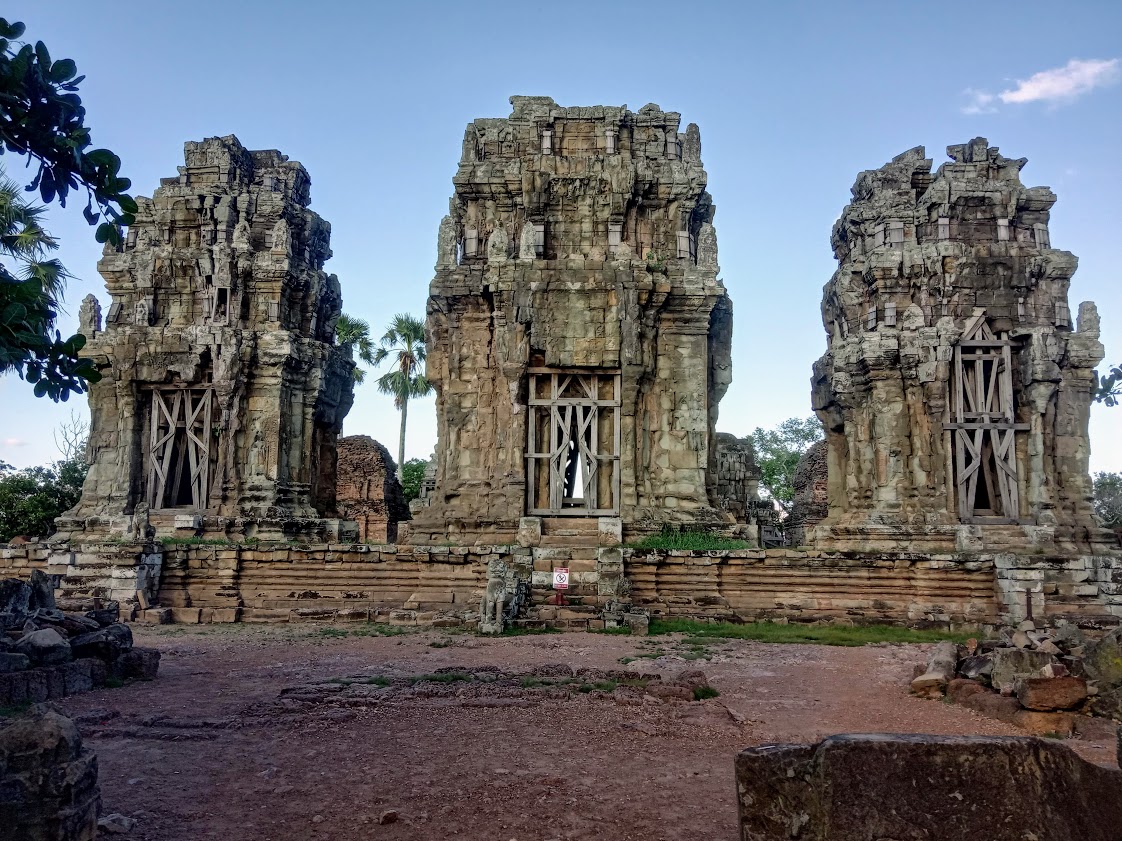- Area: Siem Reap Province > Krong Siem Reab > Sangkat Chong Knies > Phnom Kraom Village
- | Type: Ancient Remains & Temples
Phnom Krom, or Phnom Kraom, is a 140 m high mountain located about 13 km south of Siem Reap city near the massive lake, Tonle Sap. Atop the mountain is the ancient 9th-century temple, Prasat Phnom Krom (Khmer: ប្រាសាទភ្នំក្រោម). It is also a popular and superb destination to watch the sunset over the beautiful and expansive fields below.
Visiting Phnom Krom
Phnom Krom is easily reached via a sealed road all the way either by car, tuk-tuk, motorbike, or bicycle. You will need to show your Angkor Pass ticket to visit the site.
At the foot of the mountain, there are stairs that lead up to the ticket checkpoint, and from there, you walk along the concrete path to the top of the small mountain. It’s quite easy but probably best avoided in the heat of midday. If you don’t feel like walking up, from the southern side of the mountain, you can also ride your motorbike or bike up to the top, passing the ticket checkpoint on the way.
Along the way up you’ll get great views over the rice fields, villages, and out to the Tonle Sap. Atop the mountain, there is a pagoda, some small shrines, and of course, the ancient temple site. Note, that there is also a larger pagoda at the foot of the mountain on the northern side which carries the same name, Phnom Krom Pagoda.
The ancient temple site is open from 7:30 am to 5:30 pm, although many people go early for the sunrise or stay later for the sunset. Recently, (05/22) authorities have cleared vegetation around the mountain opening up the views, and from the western side of the temple, you can follow a short trail that leads the around mountain top offering several different viewpoints. On a clear day, you can see out to the Tonle Sap on one side, and on the other side, you can easily see Siem Reap city, spotting the giant Angkor EYE Ferris Wheel, and even see out to Phnom Kulen.
On the way from Siem Reap to Phnom Krom, there are several restaurants with bamboo huts set among the lotus fields, foreigners are welcome and you can try some real local food here. The atmosphere is best when the water levels are up and the lotus is in bloom. More refined, and not far from here is Phnom Krom Eco Resort featuring flower gardens, dining huts by the water, and activities such as fishing.
Highlights
Views
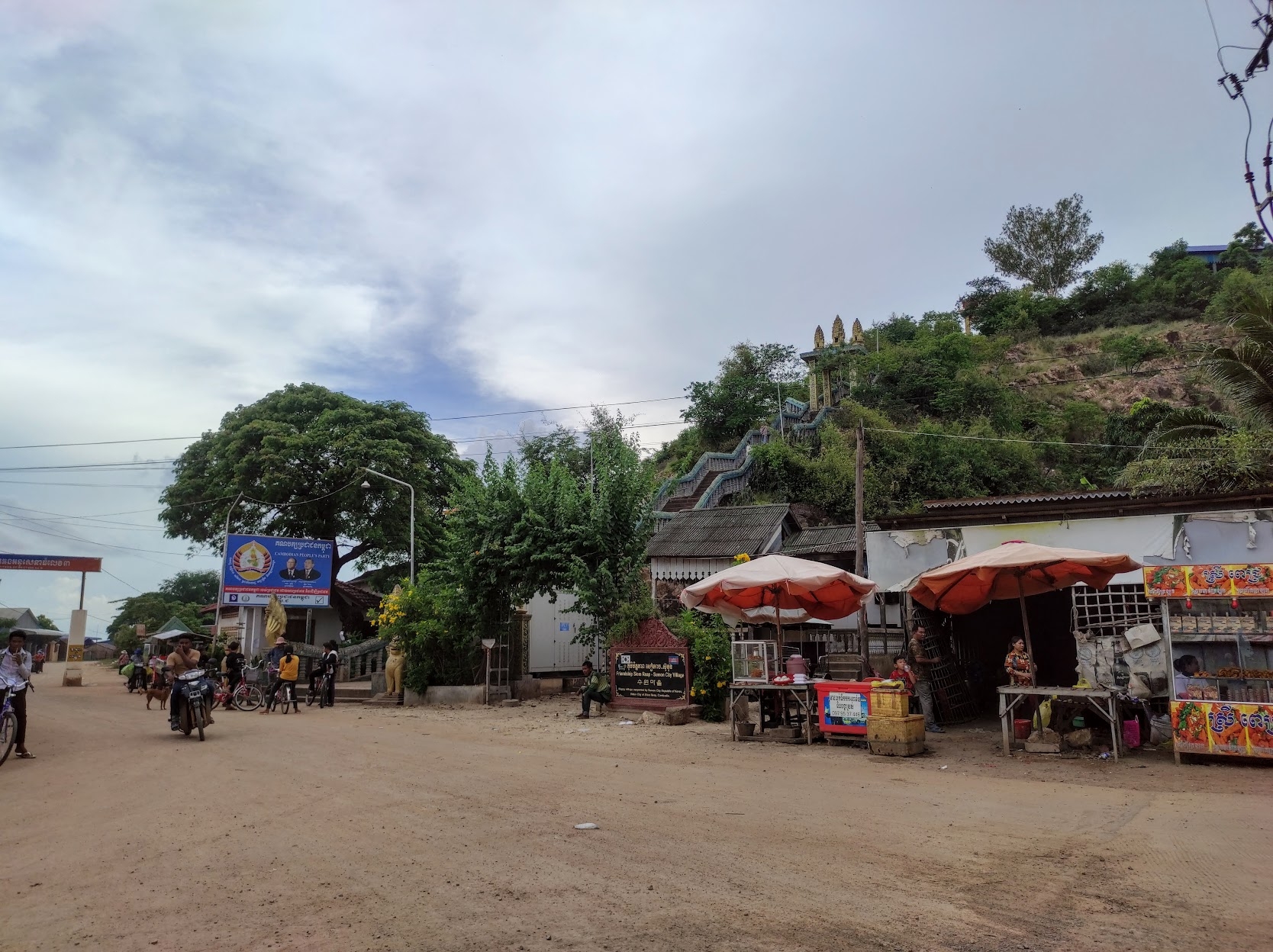
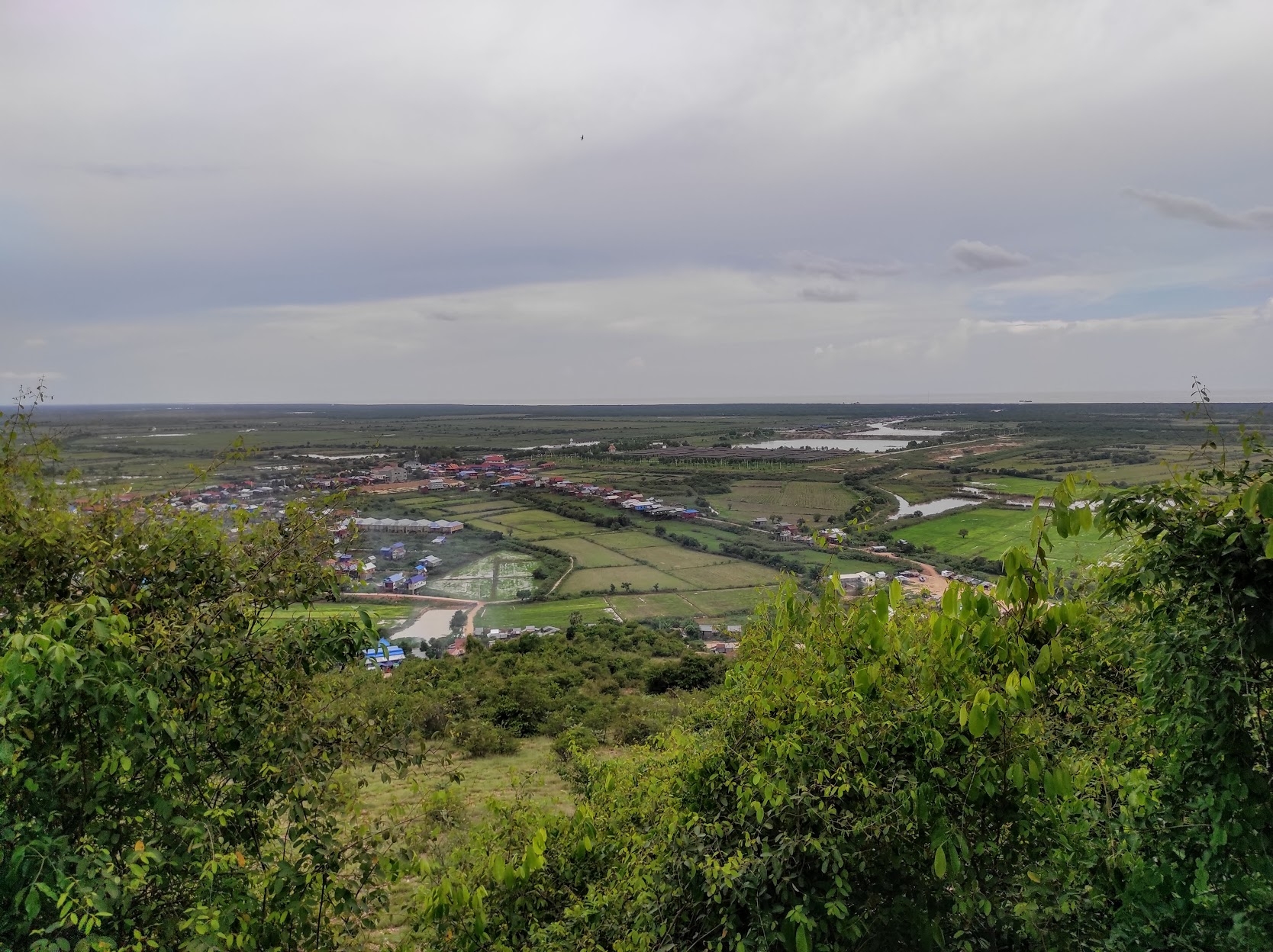

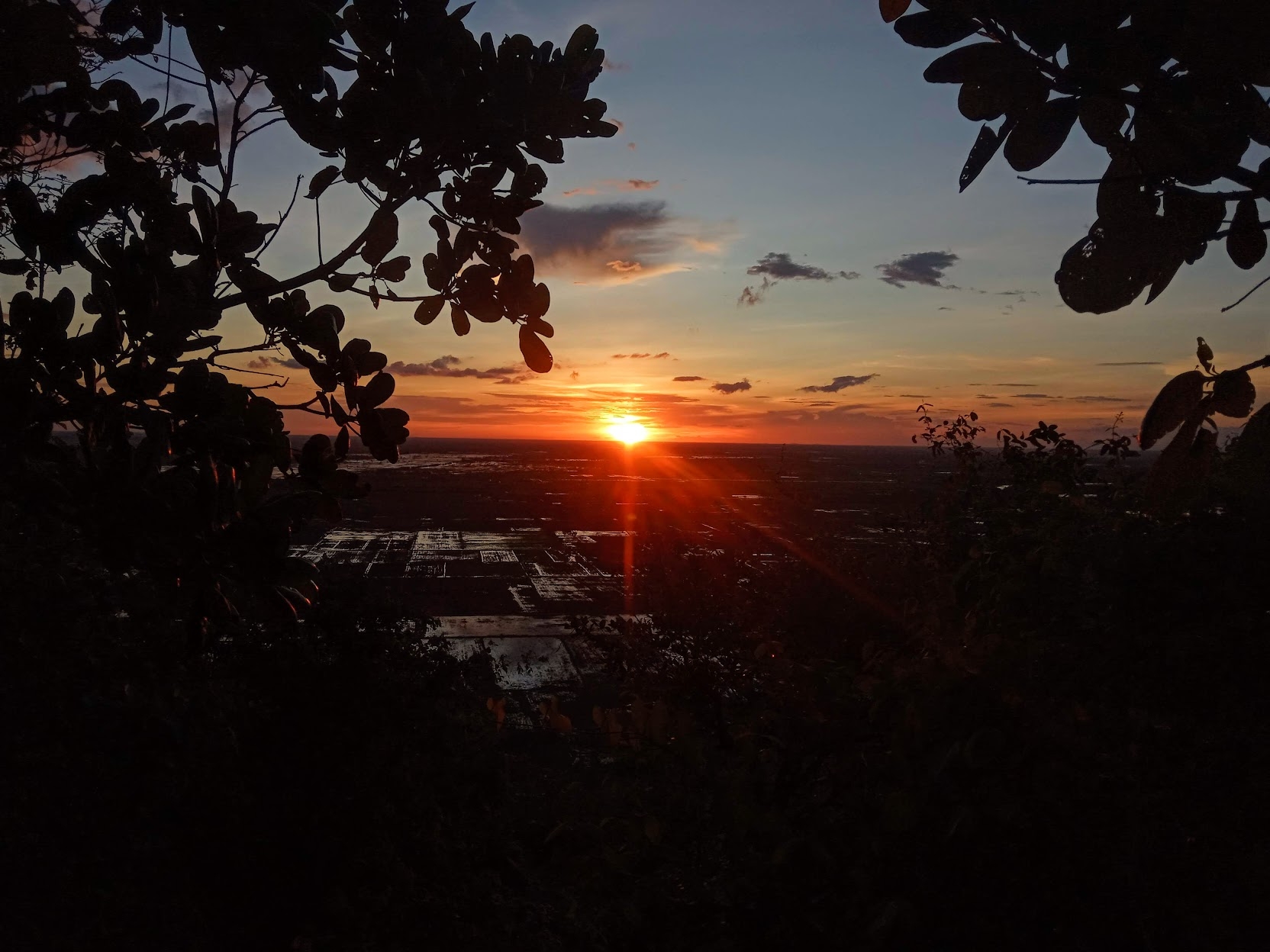
Prasat Phnom Krom
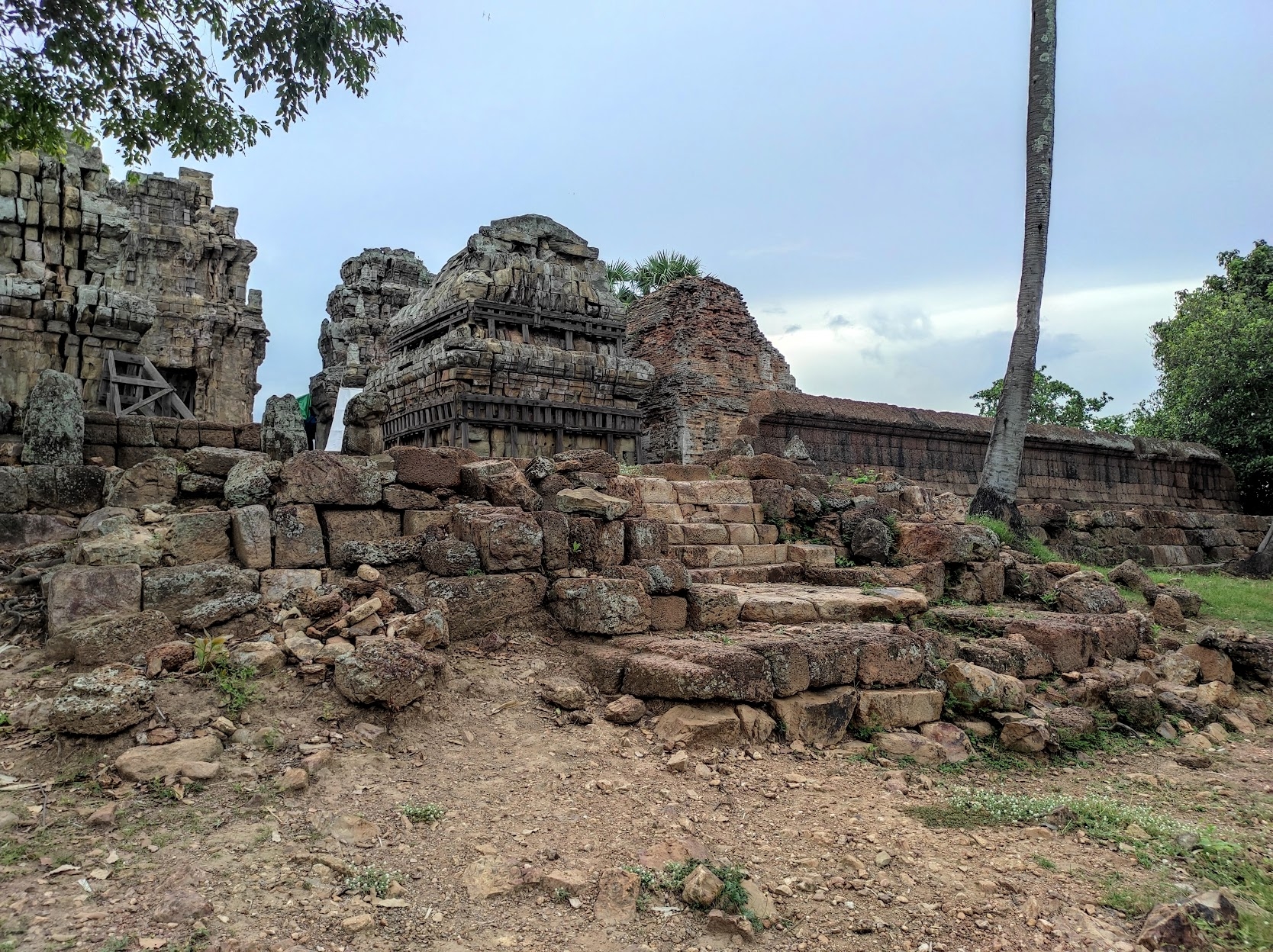


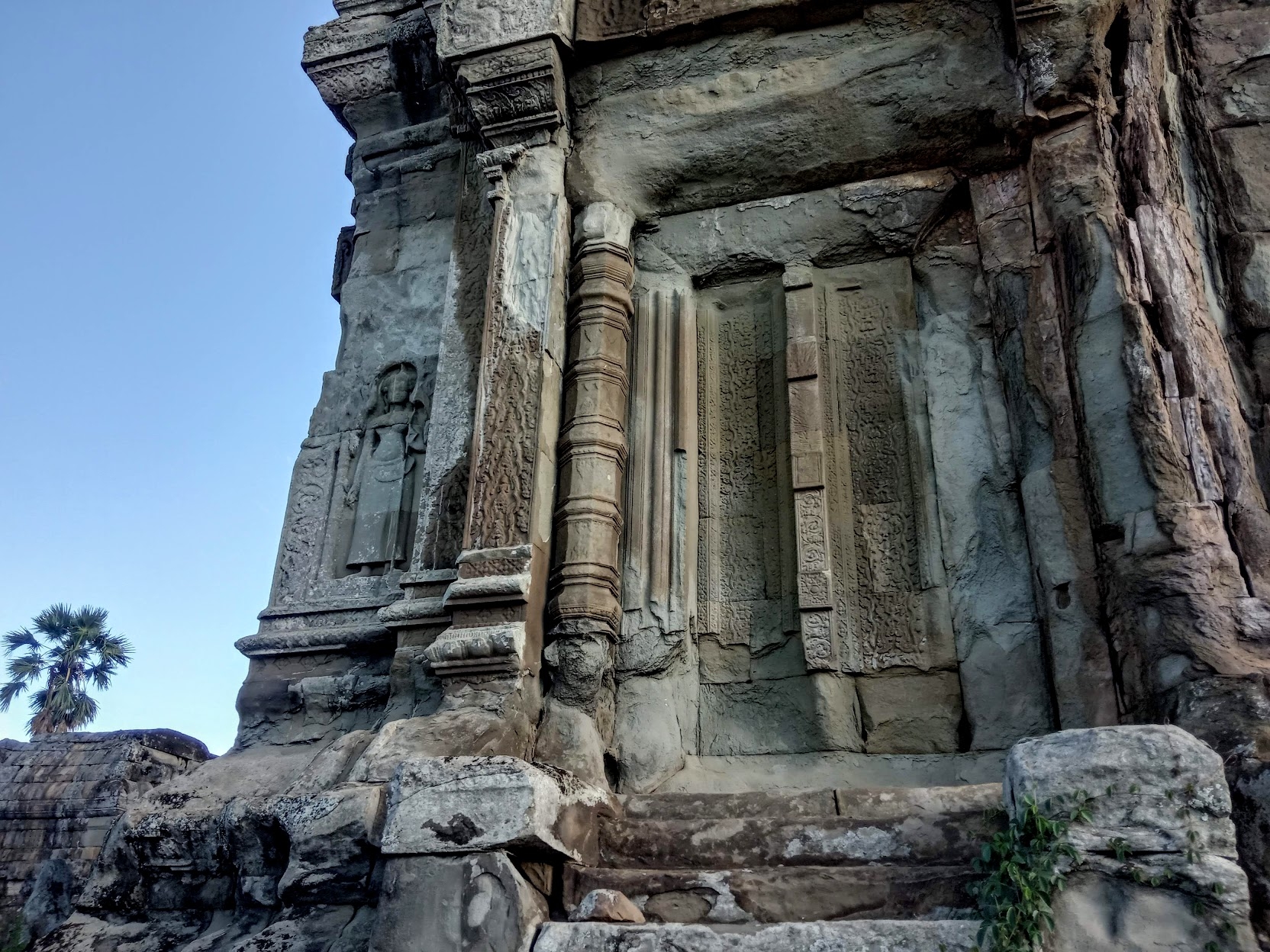
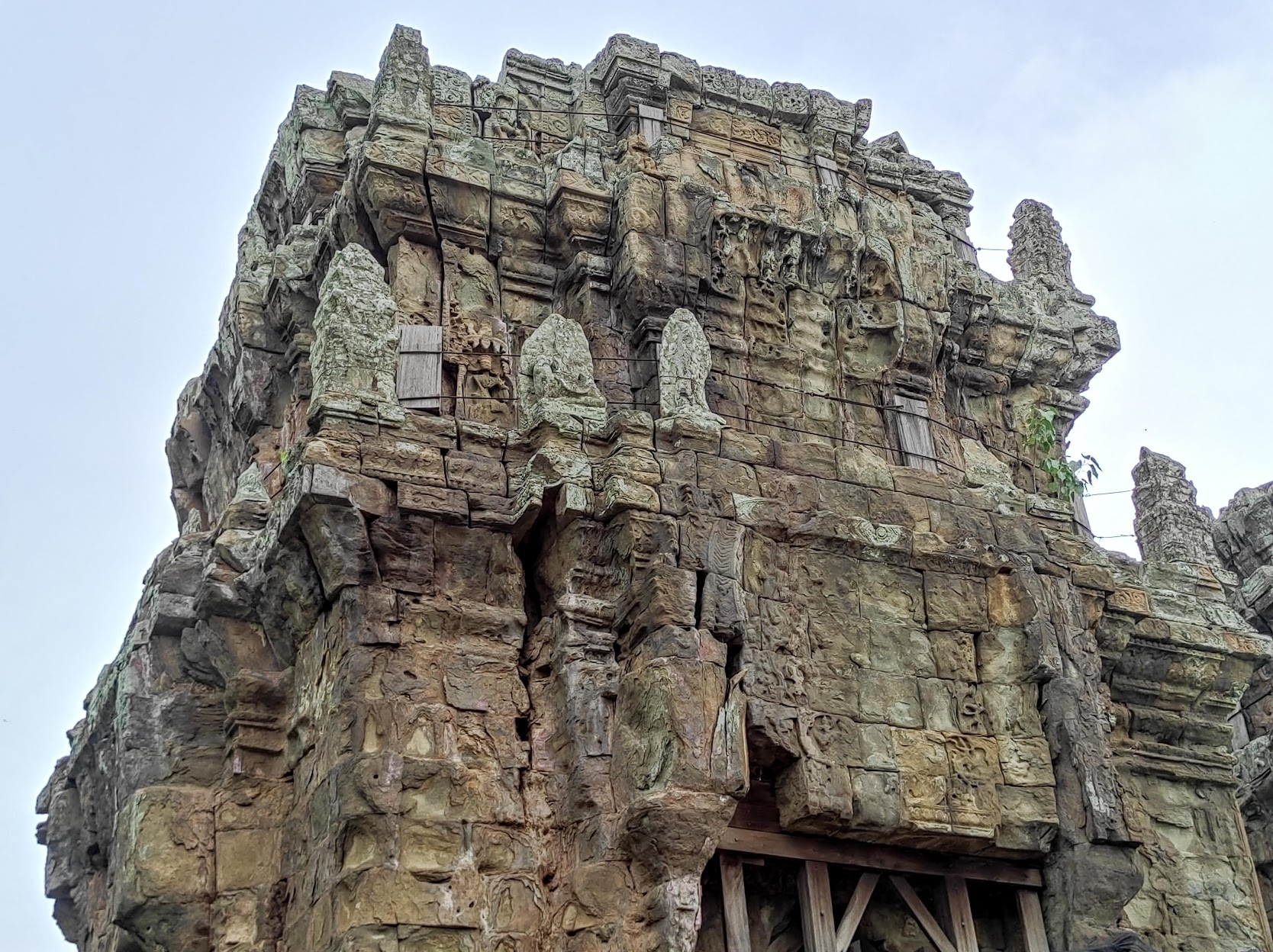
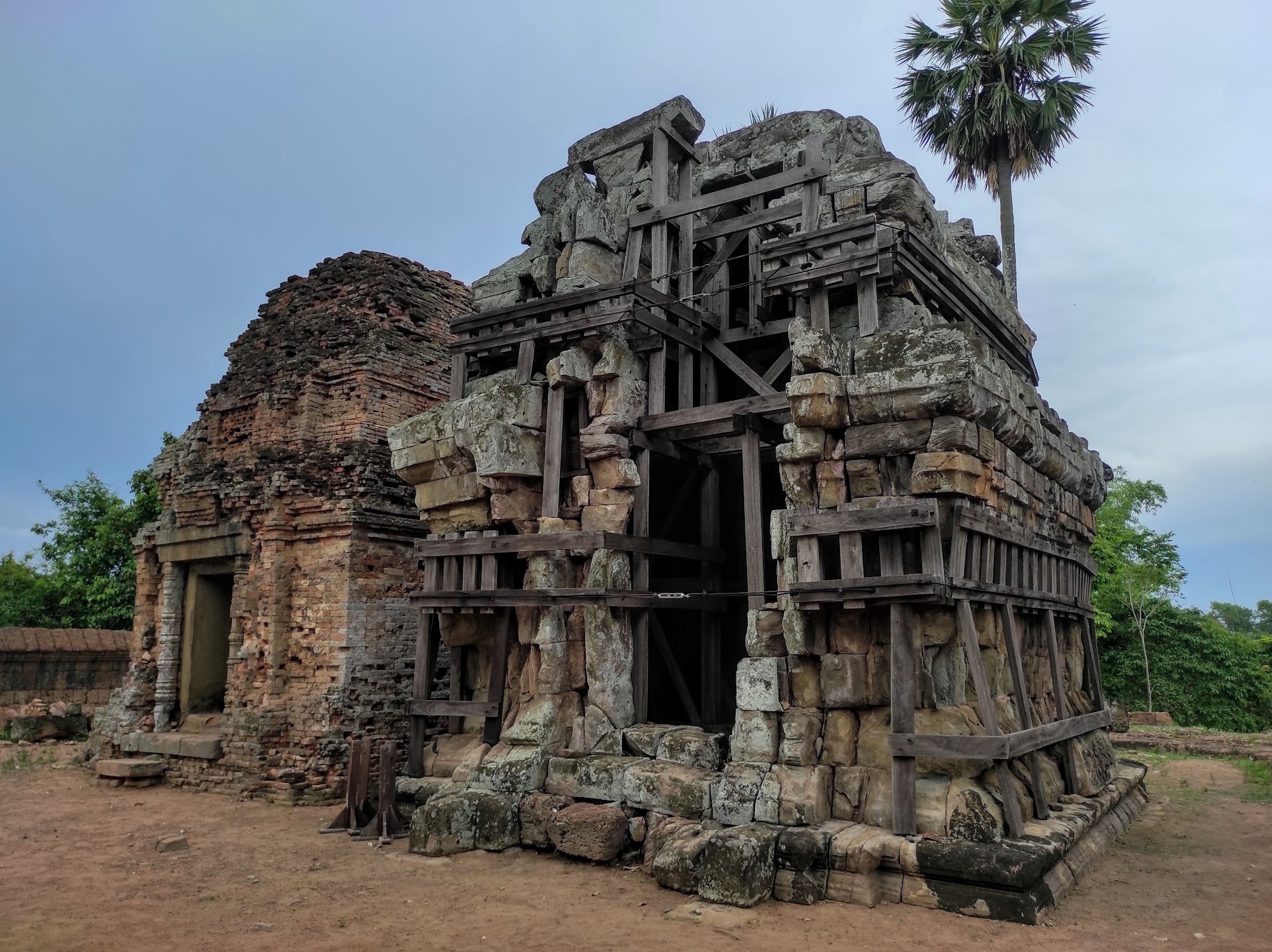
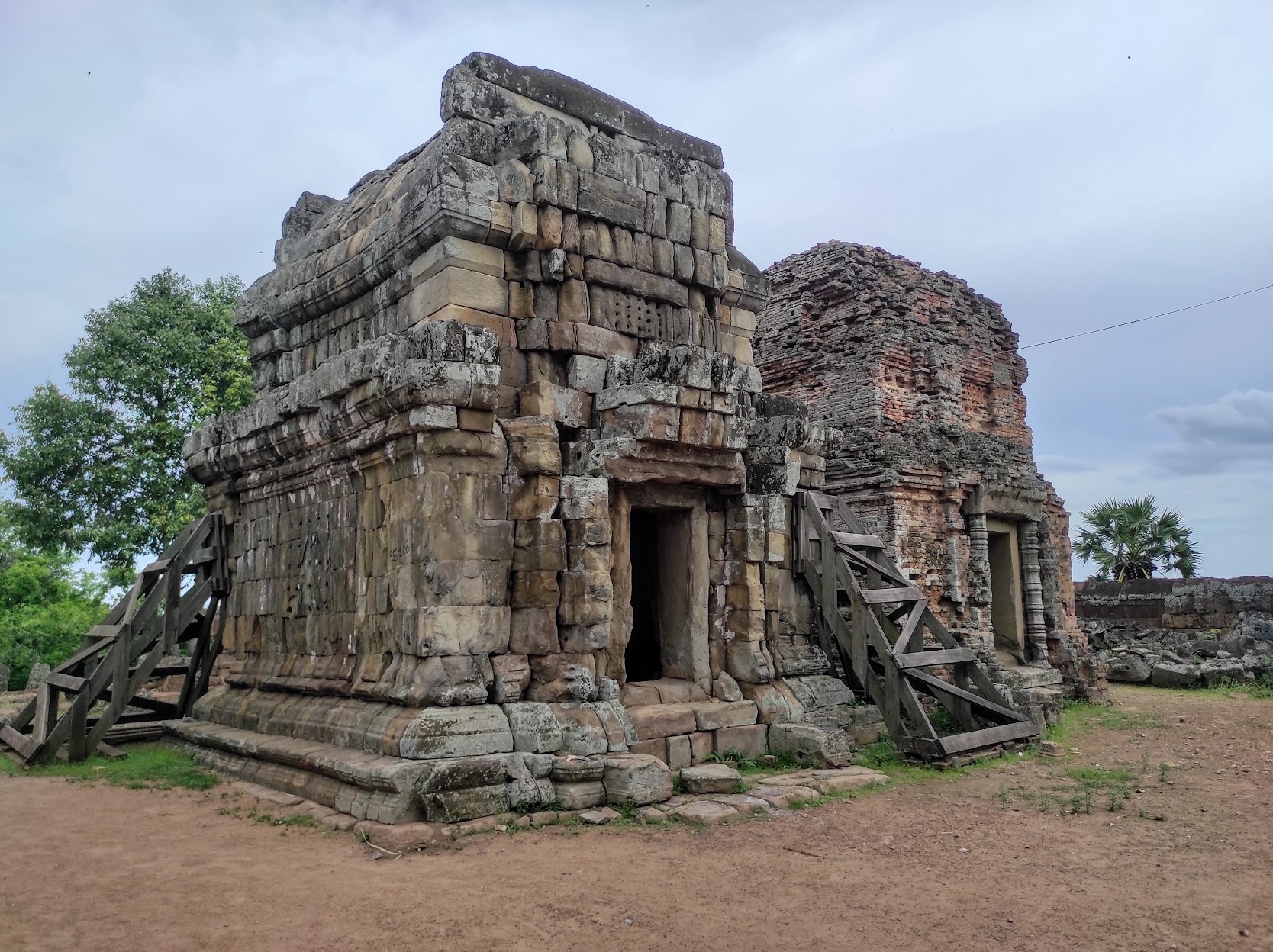
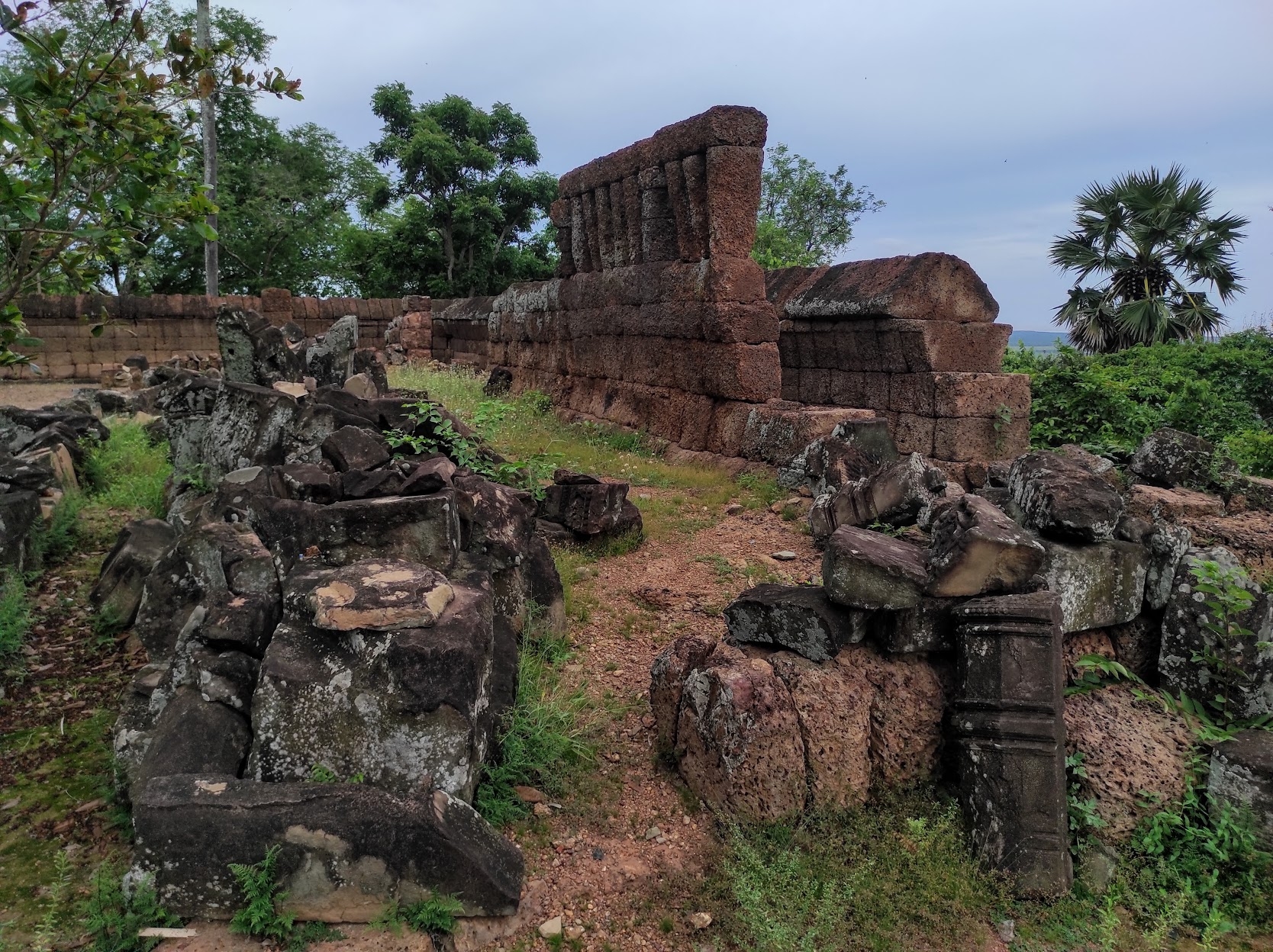
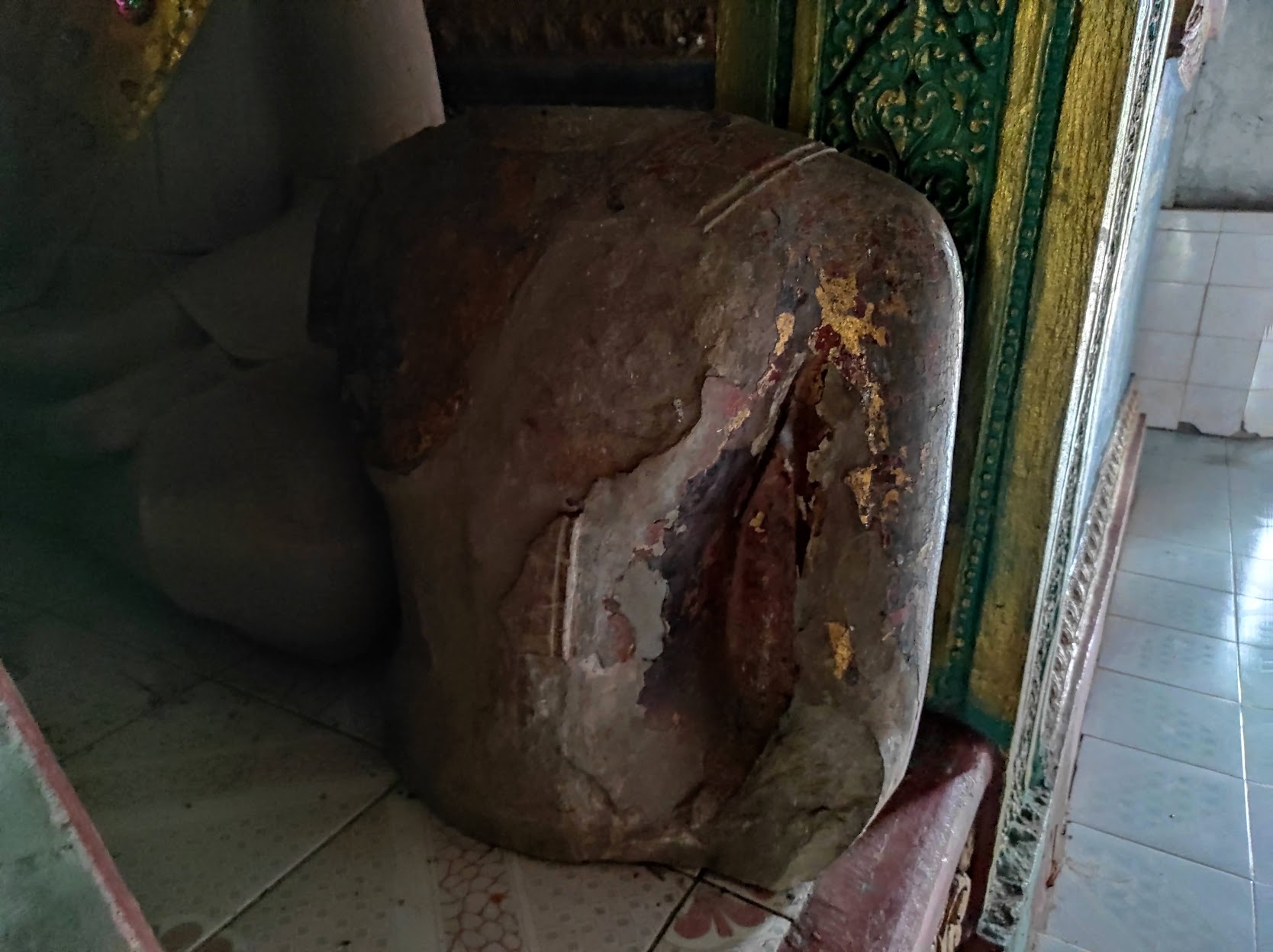

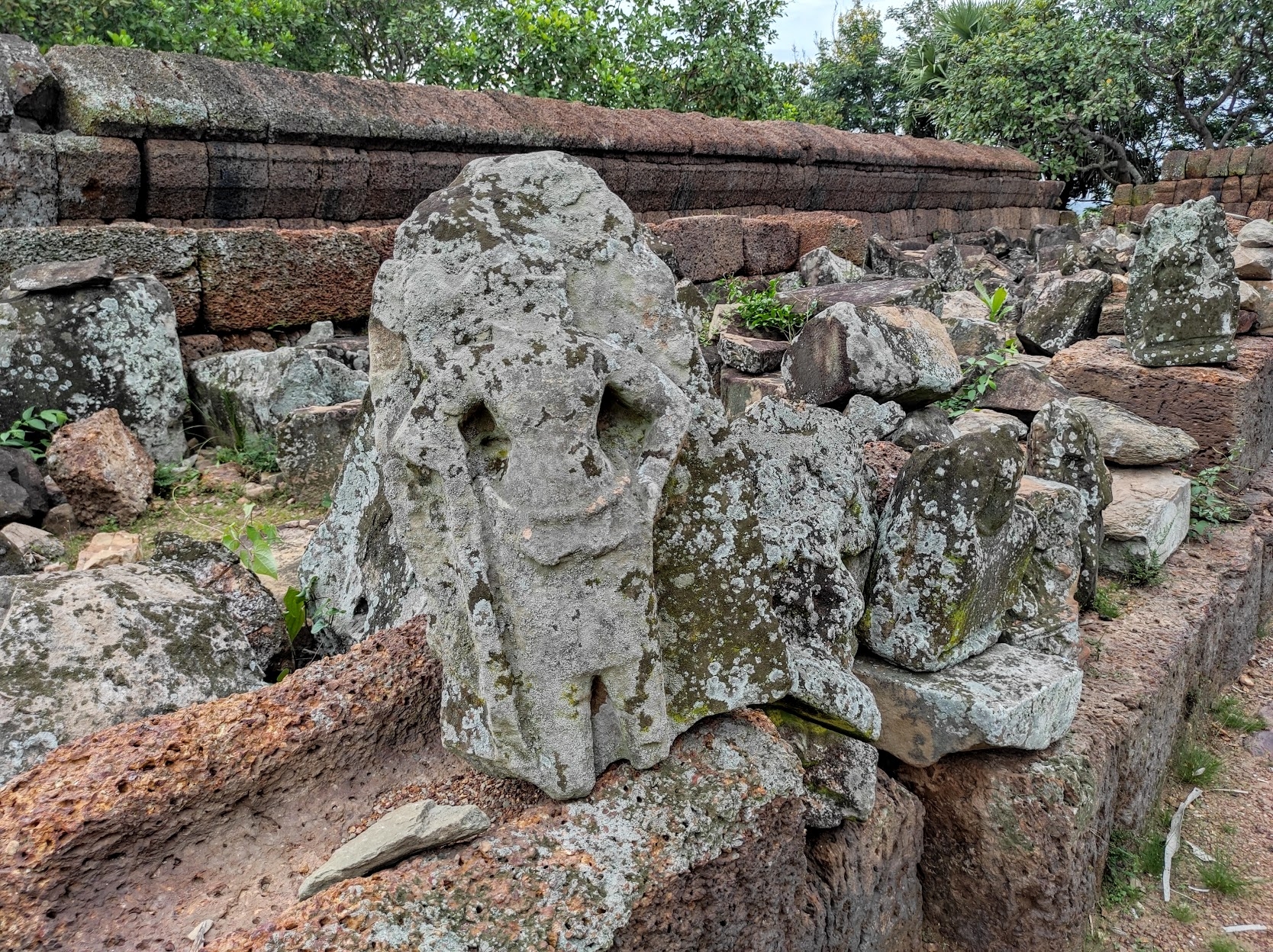
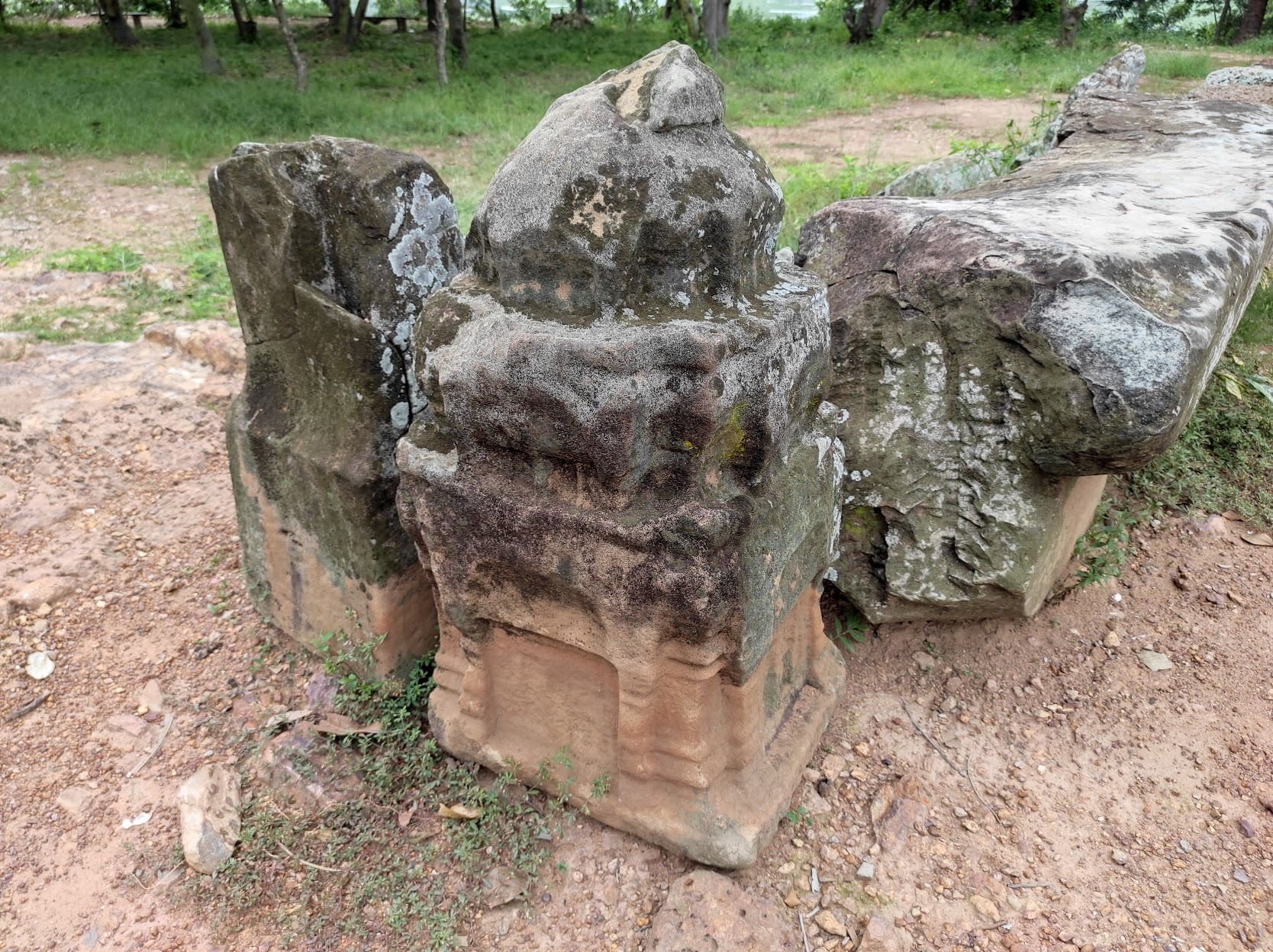
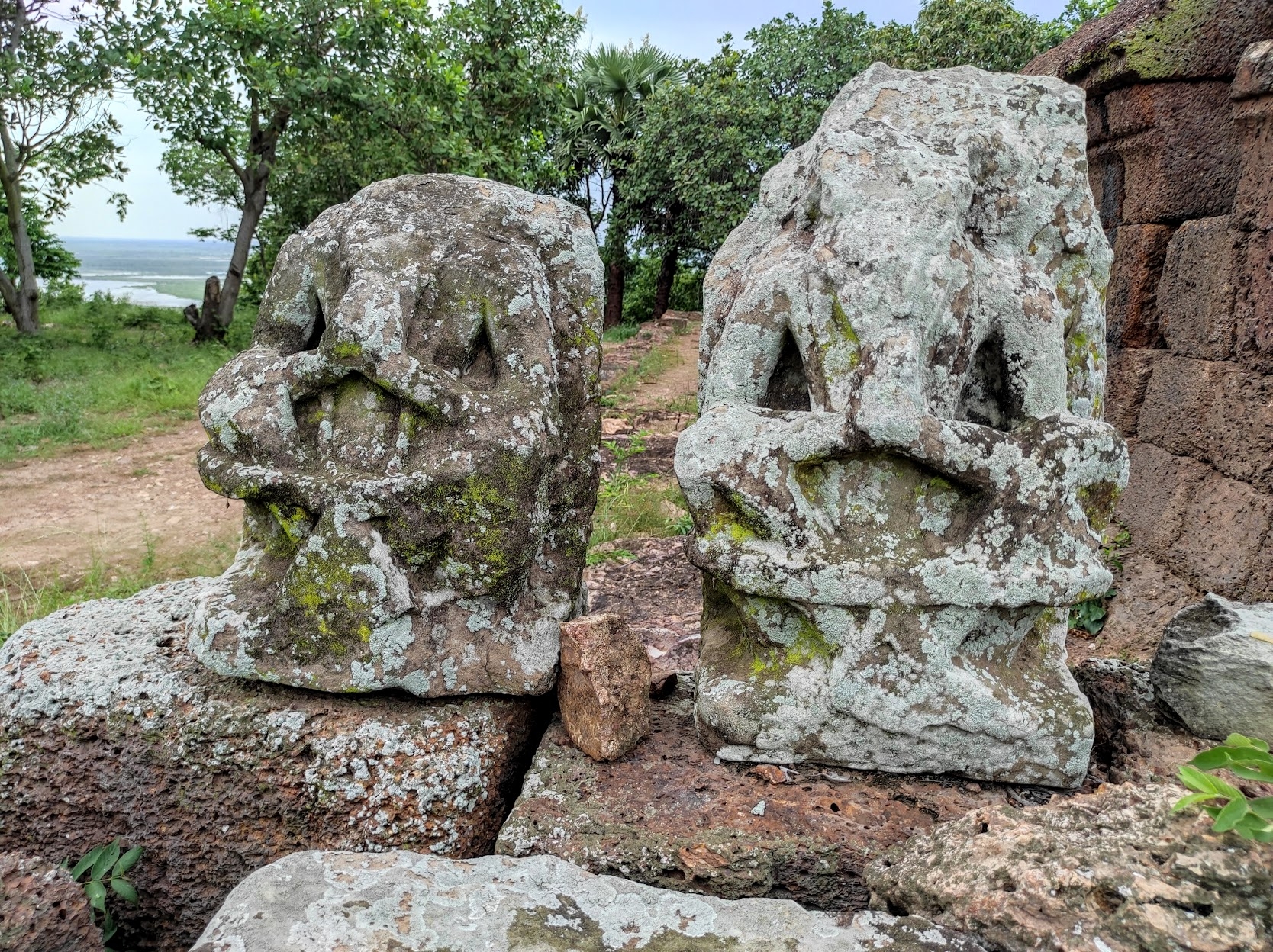
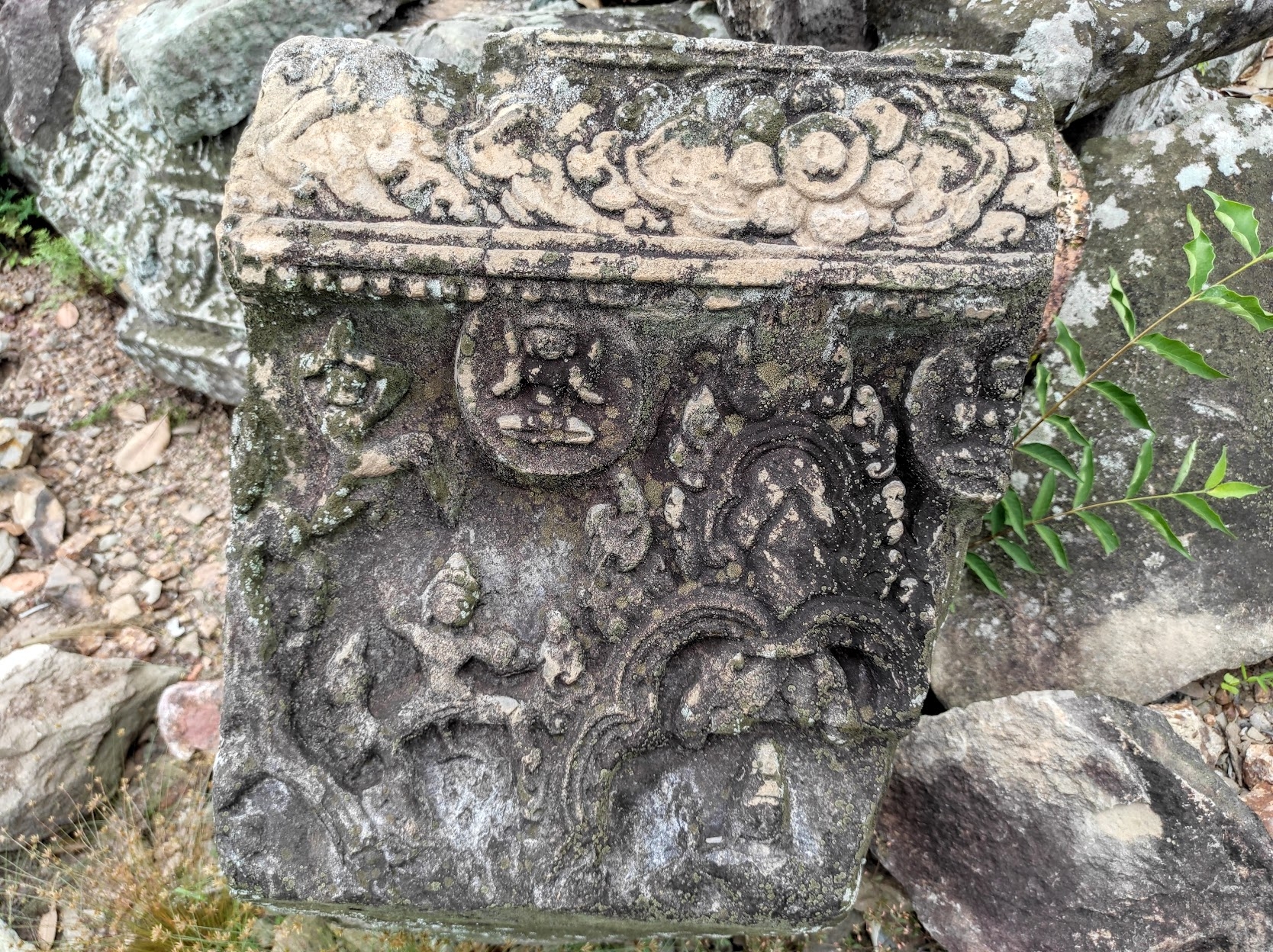
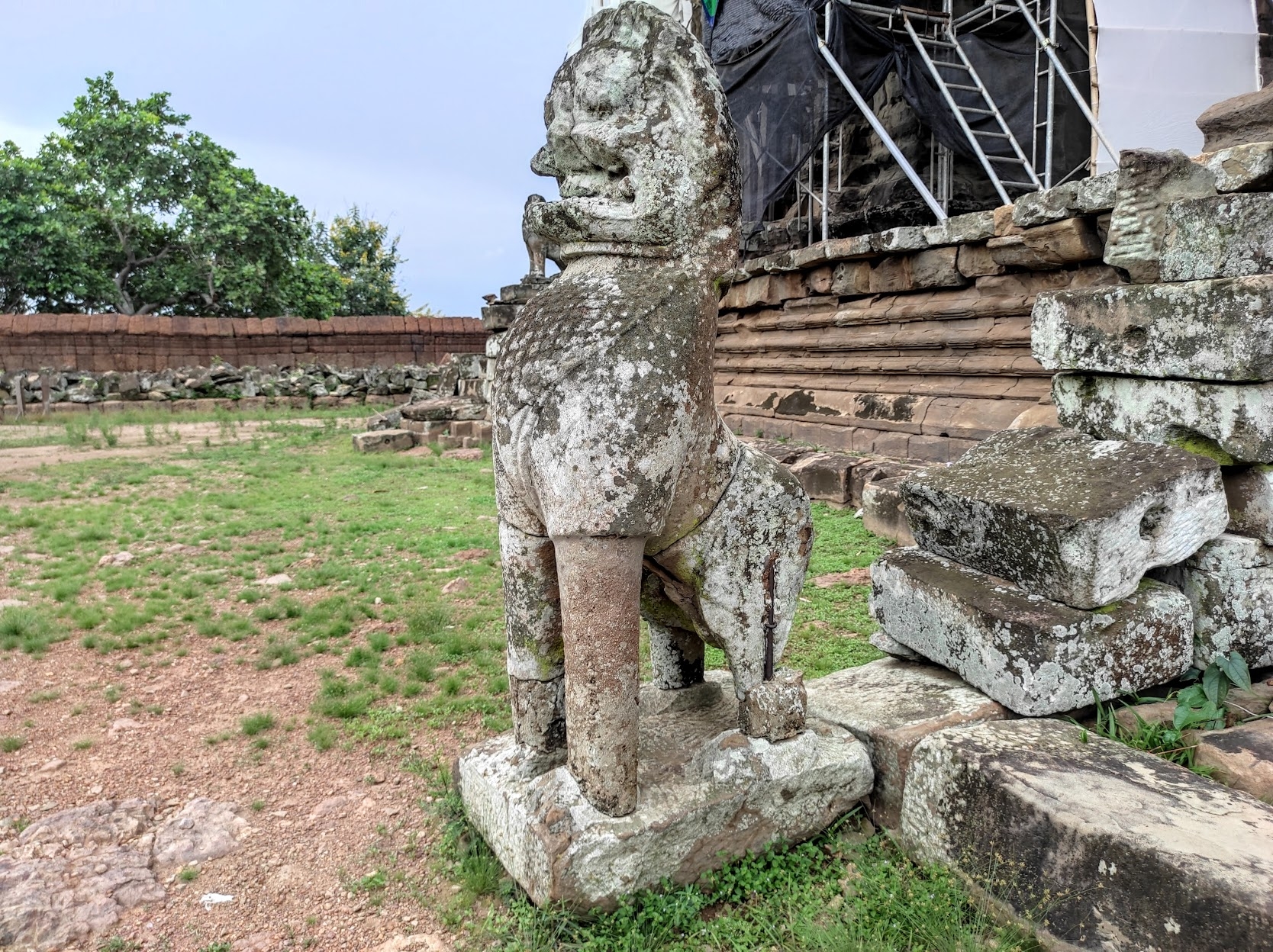
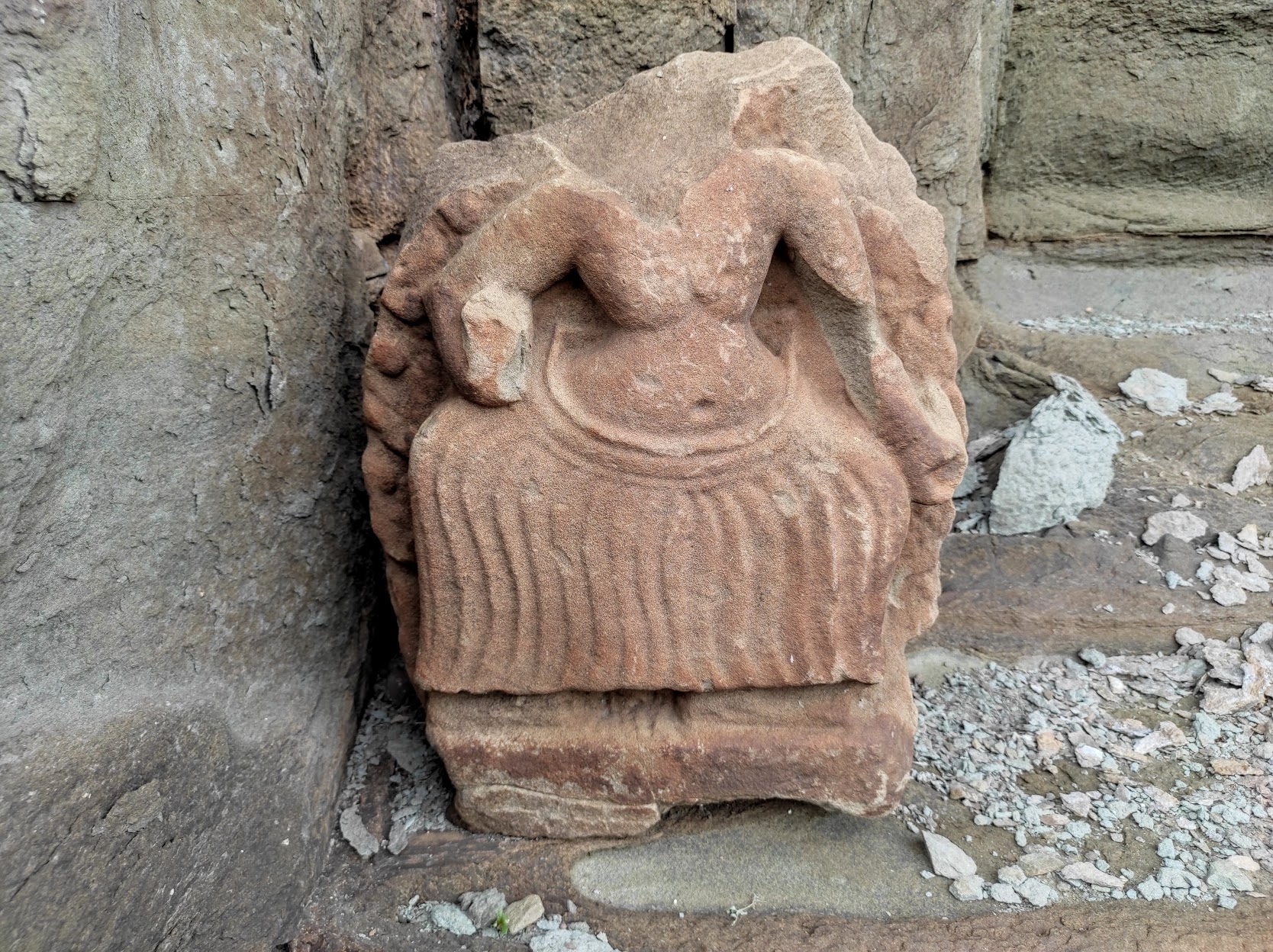
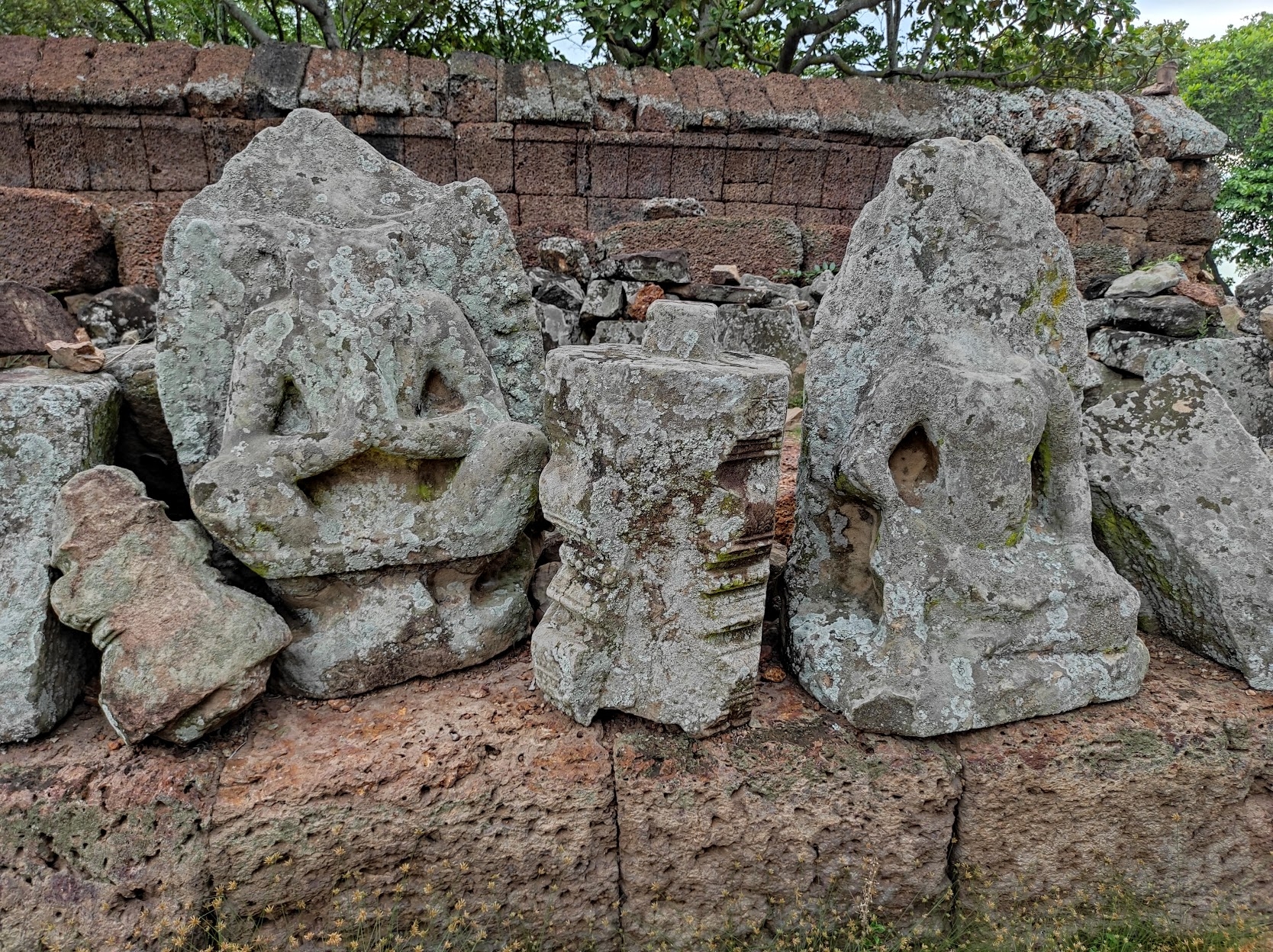
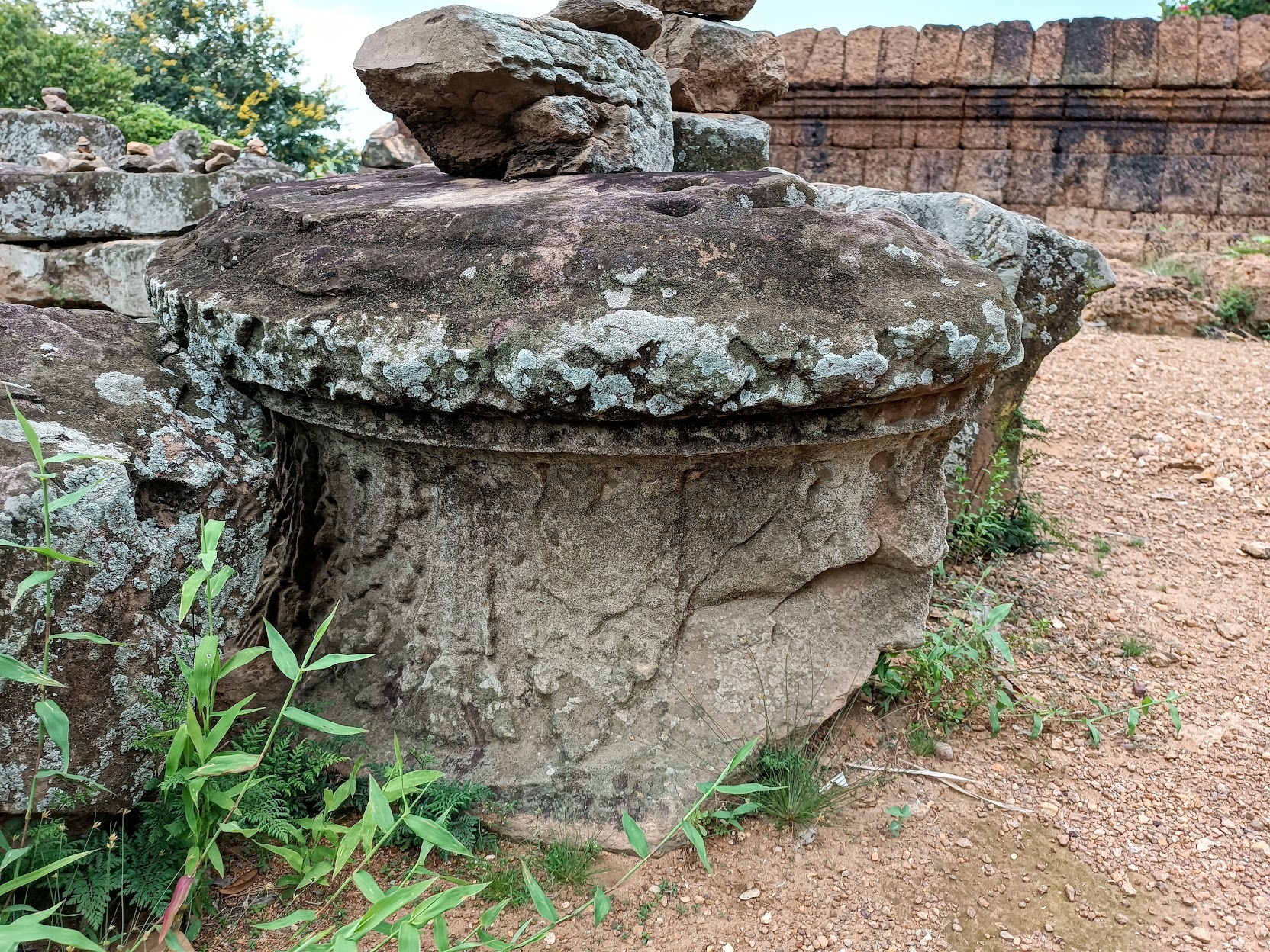
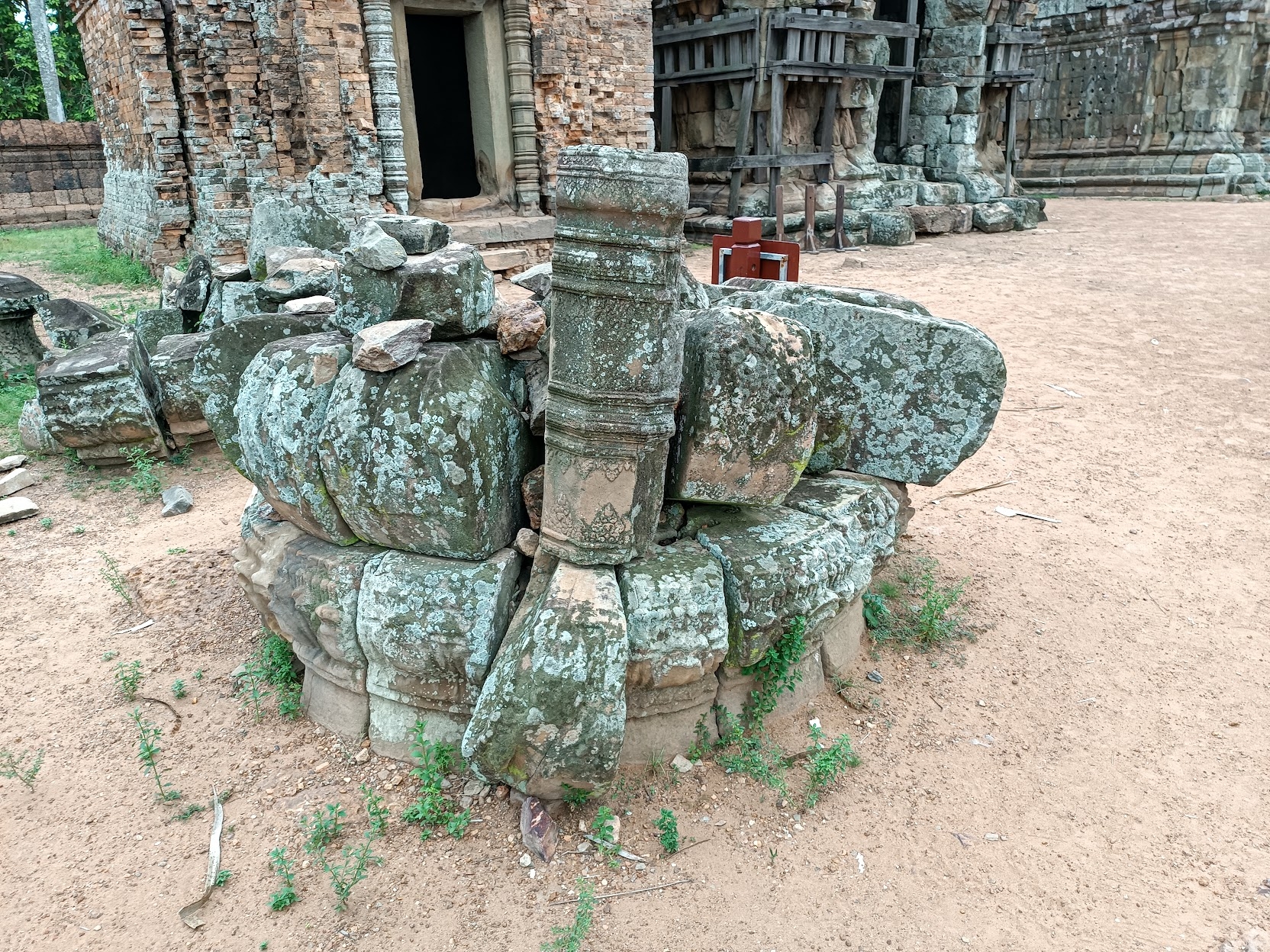
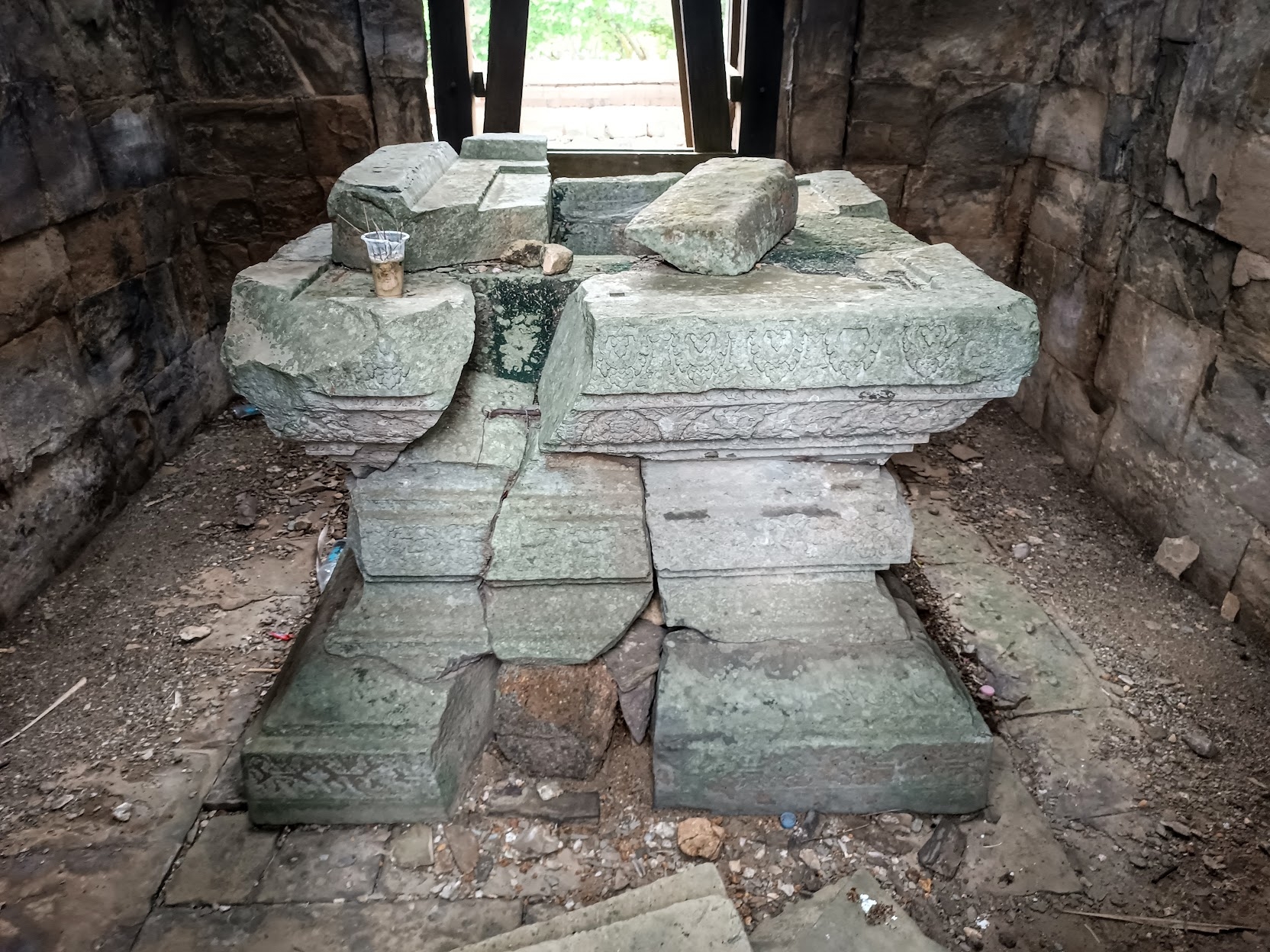
Phnom Krom temple history and layout
The temple was built at the end of the 9th or early 10th century, during the reign of King Yashovarman (889 – 910 A.D.), and dedicated to the Trimurti of gods, Shiva, Vishnu, and Brahma. No foundation inscription has been found to give an exact date for the site.
The ancient temple features an outer laterite wall with an entrance at each cardinal point with the main entrance being that on the east. Inside the enclosure, there are remains of several narrow long halls that were constructed of laterite, perhaps ashram but that’s only speculation. Inside the east entrance, four small shrines or library buildings with the outer constructed of brick and the inner of sandstone. All four open to the west featuring “diamond” windows and a second false level.
Immediately fronting these four constructions are three giant sandstone temples built atop a common platform. Of the three, the central tower stands tallest and originally housed a Shiva statue with Brahma in the south and Vishnu in the northern tower. All three towers open to the east with lions flanking the staircases to the shrines.
The three sandstone towers would have been highly decorated and although it has decayed greatly, remnants of such can still be seen in places and it can easily be grasped how beautiful it must have been (see the artistic impression below). On the northern face of the north tower, a female deity still survives to be seen along with some on the upper tiers of the central tower. Around the piles of remnants, many interesting carved pieces can be seen including antefix and temple reductions that adorned the perimeter of the tower’s upper levels, some of which can still be seen in situ.
The site is mostly identical to that of Phnom Bok which is in a slightly better state of preservation and together with Phnom Bakheng, they formed Yashovarman’s trimurti of mountain temples.
During clearance works by Maurice Glaize in 1938, several items were recovered including three decorated pedestals which were reconstructed, the most interesting being a circular pedestal from the south tower that was decorated with Hamsa alternating with lotus petals around its center. Remnants of several seated late-era Buddha statues were found which are likely those now located in the nearby pagoda.
Remnants of the three statues were found in pieces inside the towers and other parts in nearby neak ta shelter, some parts at the foot of the mountain. Glaize noted, Shiva with two arms, wears the crescent on his hair, the Visnu and the Brahma, both with four arms, one has a circle of pearls halfway up the chignons, the other his chignon broken. The head of Brahma was also found. Two Shiva heads and two body parts are presently held in the Museum Guimet. The Shiva statue was restored and placed back into its original position, while today it is no longer in situ. A decayed nine-diety/planets panel was also found.
A massive Dvarapala statue, over 3 m tall, was unearthed in front of the three towers on the eastern side (picture above) that he noted to have a rakshasa head with a diadem and tiered makuta and attributed it to the Baphuon period or slightly later (11th-12th century). It was resurrected but it is no longer in situ.
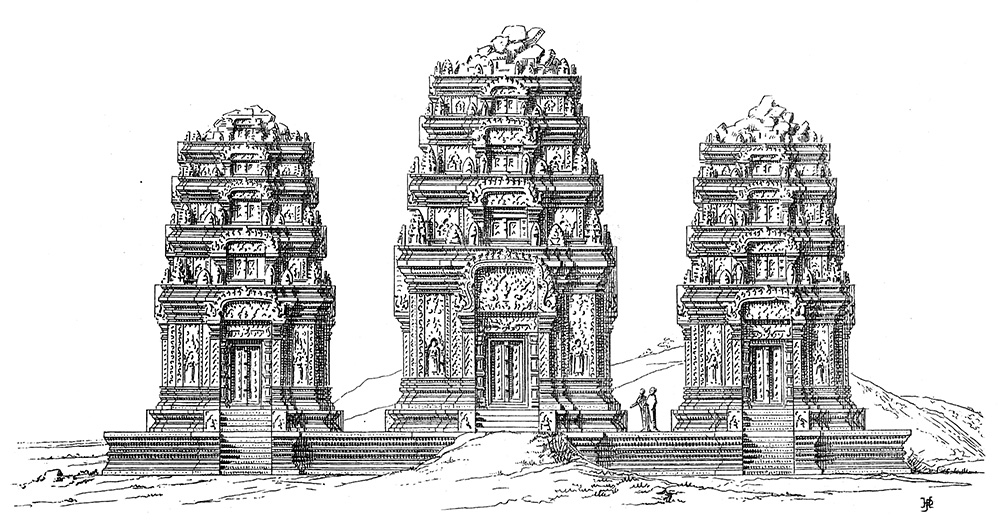

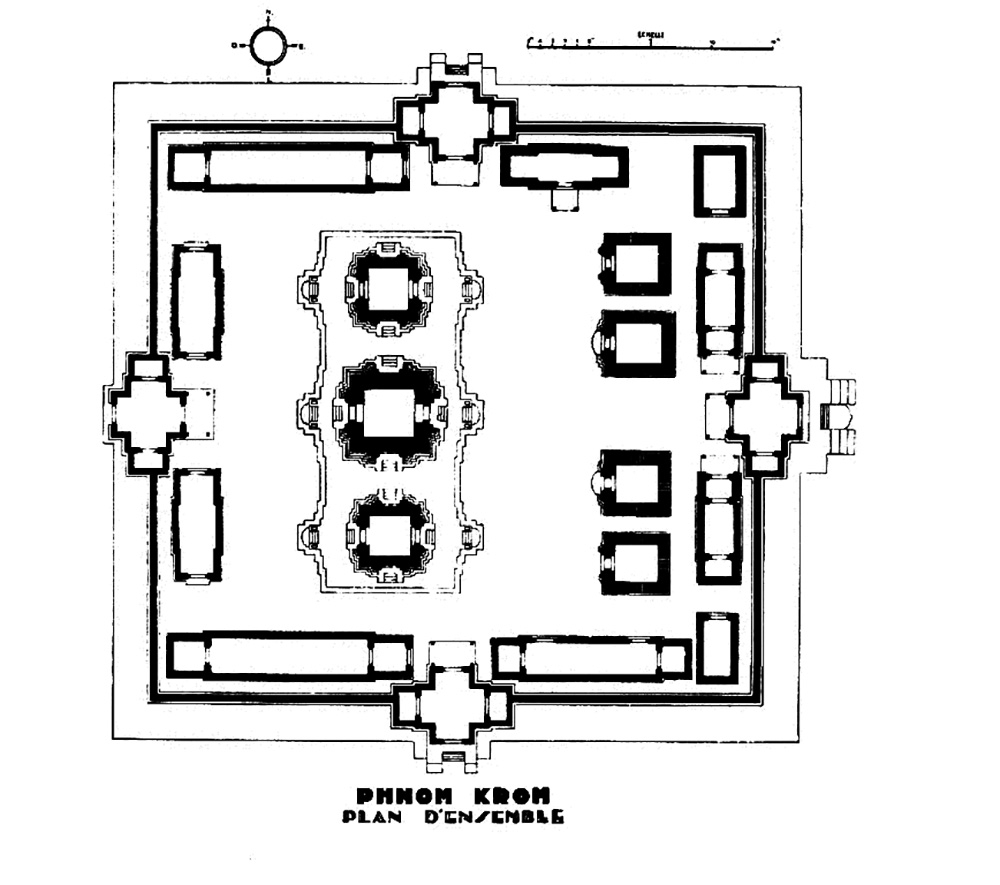
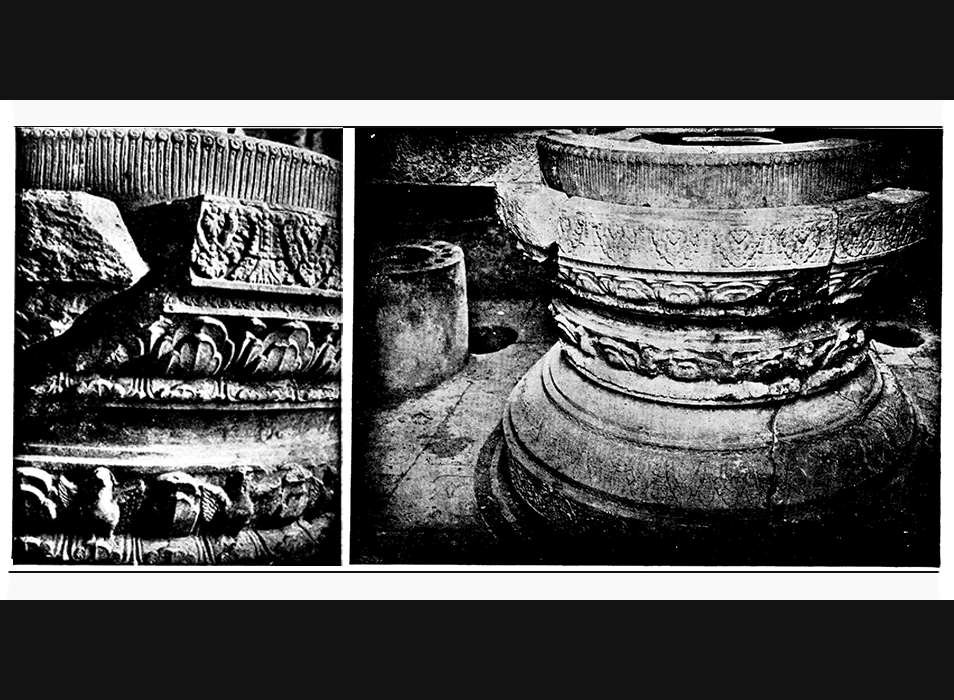
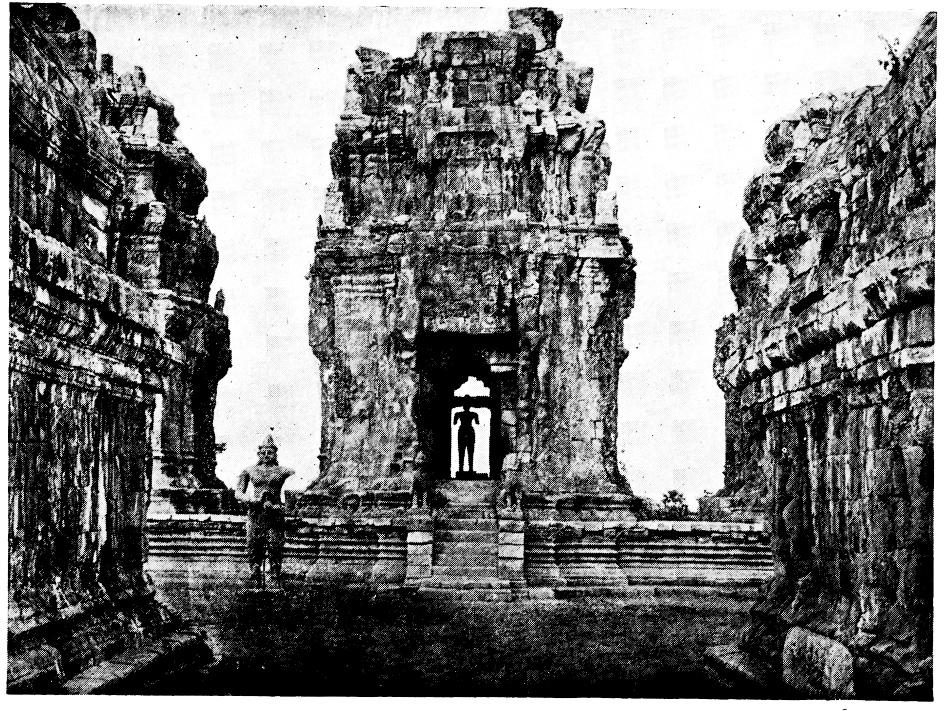
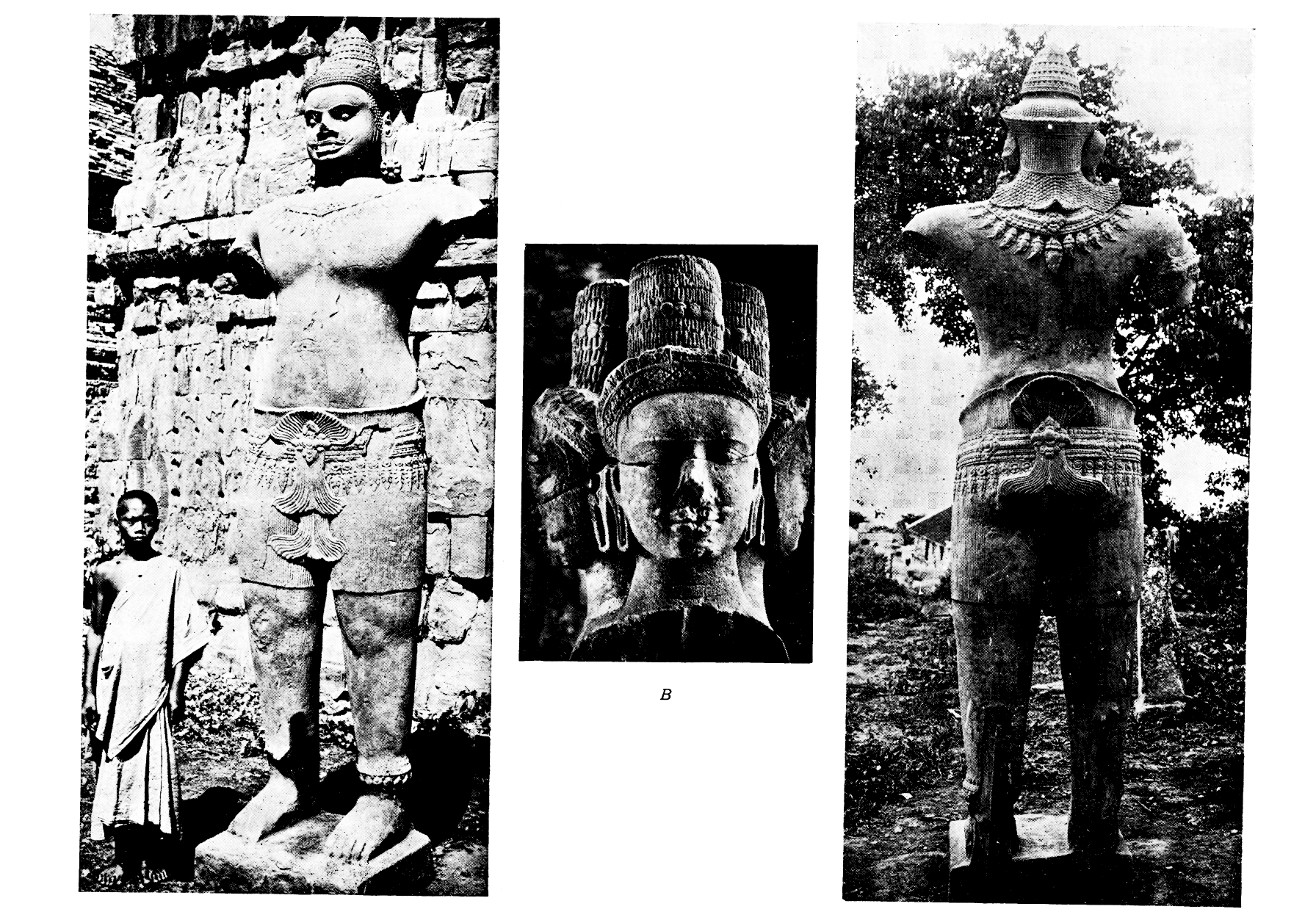
References & Further Reading
- Le dégagement du Phnom Krôm, précédé de quelques remarques sur les fondations de Yaçovarman, Glaize Maurice, 1940. In: Bulletin de l’Ecole française d’Extrême-Orient. Tome 40 N°2, 1940. pp. 371-381;doi : https://doi.org/10.3406/befeo.1940.4800 https://www.persee.fr/doc/befeo_0336-1519_1940_num_40_2_4800
- L’art d’Indravarman, Parmentier Henri, 1919. In: Bulletin de l’Ecole française d’Extrême-Orient. Tome 19, 1919. pp. 1-98; doi : https://doi.org/10.3406/befeo.1919.5647 https://www.persee.fr/doc/befeo_0336-1519_1919_num_19_1_5647
- Chronique, BEFEO 38
Map
Site Info
- Site Name: Phnom Kraom (Pr.) Khmer Name: បា្រសាទភ្នំក្រោម
- Reference ID: HA11717 | Posted: January 20, 2021 | Last Update: June 4th, 2022
- Date/Era: 10th Century
- Tags/Group: 10th Century, Angkor, Map: Top 100 Temples & Ancient Sites (Siem Reap), Temples, Yaçovarman I
- Location: Siem Reap Province > Krong Siem Reab > Sangkat Chong Knies > Phnom Kraom Village
- MoCFA ID: 434
- IK Number: 501

